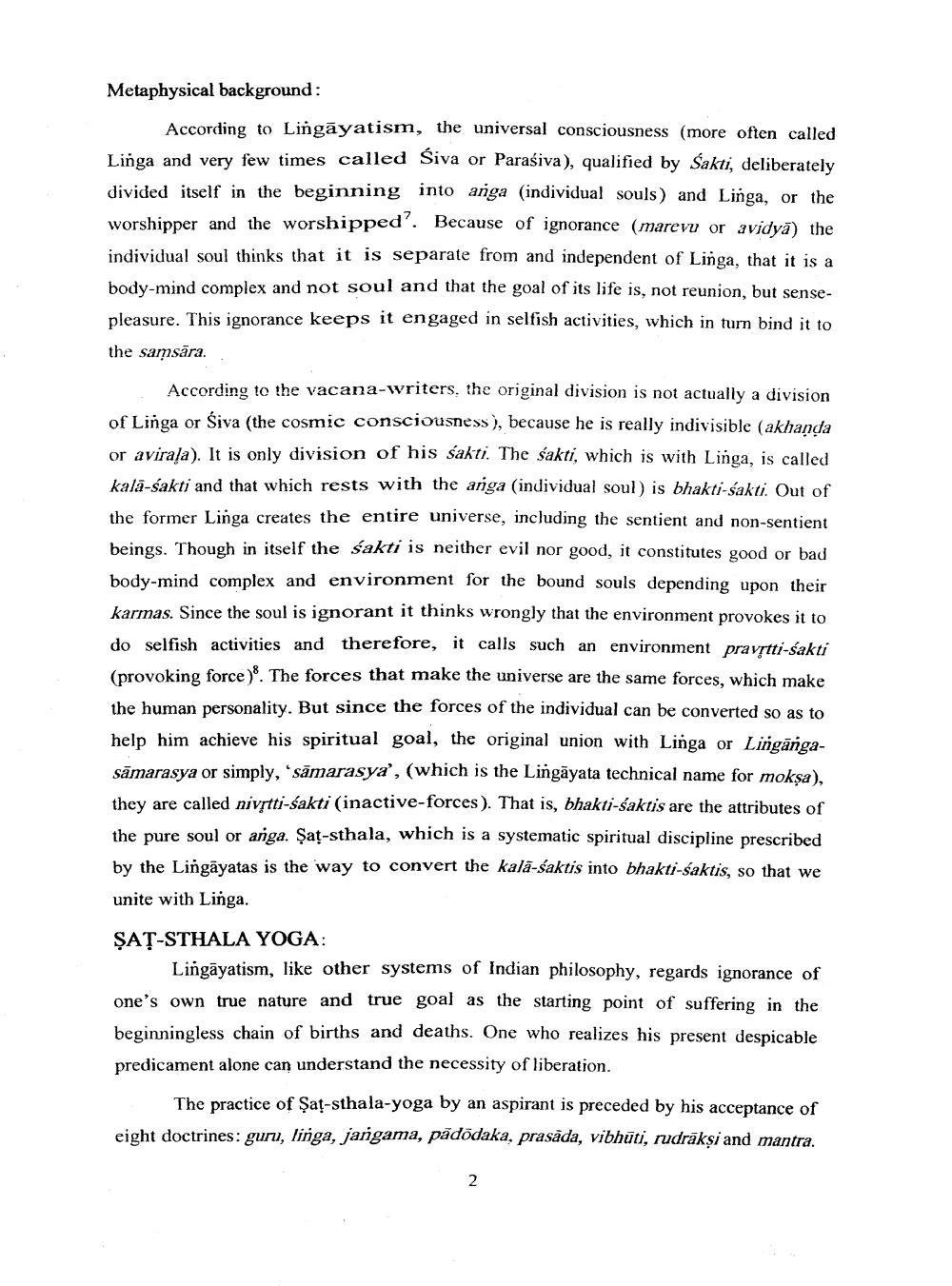Book Title: Synthesis of Yoga in Lingayatism Author(s): N G Mahadevappa Publisher: N G Mahadevappa View full book textPage 2
________________ Metaphysical background: According to Lingāyatism, the universal consciousness (more often called Linga and very few times called Siva or Paraśiva), qualified by Śakti, deliberately divided itself in the beginning into anga (individual souls) and Linga, or the worshipper and the worshipped'. Because of ignorance (marevu or avidyā) the individual soul thinks that it is separate from and independent of Linga, that it is a body-mind complex and not soul and that the goal of its life is not reunion, but sensepleasure. This ignorance keeps it engaged in selfish activities, which in turn bind it to the samsāra. According to the vacana-writers, the original division is not actually a division of Linga or Siva (the cosmic consciousness ), because he is really indivisible (akhanda or avirala). It is only division of his sakti. The sakti, which is with Linga, is called kalā-sakti and that which rests with the anga (individual soul) is bhakti-sakti. Out of the former Linga creates the entire universe, including the sentient and non-sentient beings. Though in itself the sakti is neither evil nor good, it constitutes good or bad body-mind complex and environment for the bound souls depending upon their karmas. Since the soul is ignorant it thinks wrongly that the environment provokes it to do selfish activities and therefore, it calls such an environment pravstti-sakti (provoking force). The forces that make the universe are the same forces, which make the human personality. But since the forces of the individual can be converted so as to help him achieve his spiritual goal, the original union with Linga or Lingāngasâmarasya or simply, 'sāmarasya', (which is the Lingayata technical name for moksa). they are called nivrtti-sakti (inactive-forces). That is, bhakti-baktis are the attributes of the pure soul or anga. Sat-sthala, which is a systematic spiritual discipline prescribed by the Lingayatas is the way to convert the kalā-Śaktis into bhakti-aktis, so that we unite with Linga. ŞAT-STHALA YOGA: Lingāyatism, like other systems of Indian philosophy, regards ignorance of one's own true nature and true goal as the starting point of suffering in the beginningless chain of births and deaths. One who realizes his present despicable predicament alone can understand the necessity of liberation. The practice of Şat-sthala-yoga by an aspirant is preceded by his acceptance of eight doctrines: guru, linga, jangama, pădödaka, prasåda, vibhūti, rudrākşi and mantra.Page Navigation
1 2 3 4 5 6 7 8 9 10 11 12 13 14 15 16
